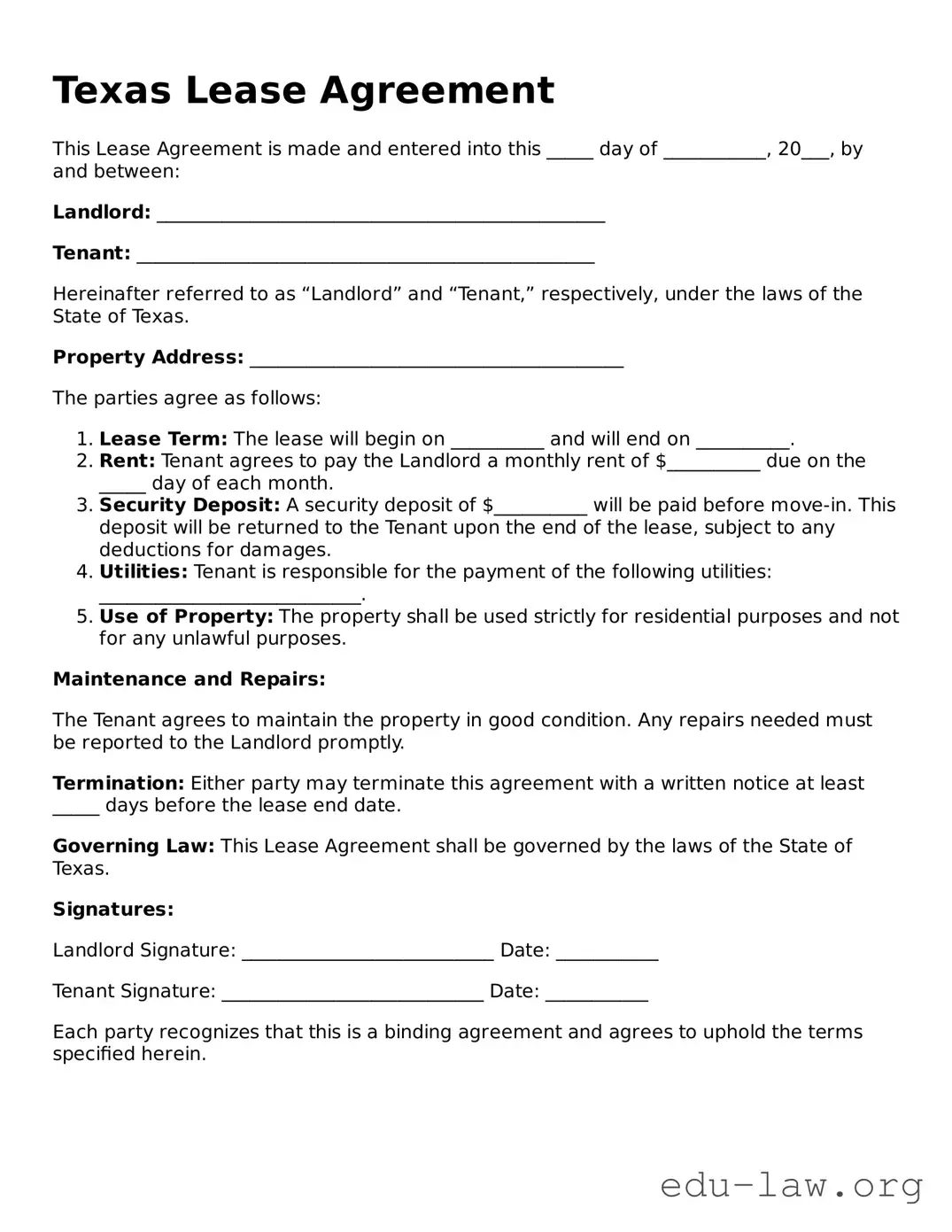What is a Texas Lease Agreement?
A Texas Lease Agreement is a legal document that outlines the terms under which a landlord allows a tenant to rent property. This document includes important details such as the duration of the lease, the amount of rent, and the responsibilities of both parties. It serves to protect the rights of landlords and tenants by clearly stating the expectations of each party.
What essential details should be included in a Texas Lease Agreement?
A comprehensive Texas Lease Agreement should include the names of the landlord and tenant, the rental property's address, the duration of the lease (start and end dates), the amount of rent and the payment schedule, security deposit details, and information regarding maintenance responsibilities. Additionally, any rules regarding pets, smoking, or alterations to the property should also be specified.
Can a lease be modified after it has been signed?
Yes, a lease can be modified after signing, but both parties must agree to the changes. Written consent is important to avoid misunderstandings in the future. Both parties should sign any amendments to ensure that the changes are legally recognized.
What happens if a tenant wants to break the lease early?
If a tenant wishes to break the lease early, they must review the lease terms for any specific conditions regarding early termination. In many cases, the tenant may be required to pay a penalty or forfeit their security deposit. It's essential to communicate with the landlord and explore options such as finding a replacement tenant or negotiating an early release.
What is a security deposit, and how is it handled in Texas?
A security deposit is a sum of money collected by the landlord as a safeguard against potential damages or unpaid rent. In Texas, landlords can charge up to one month's rent as a security deposit. The law requires landlords to return the deposit within 30 days after the tenant moves out, minus any deductions for legitimate damages or unpaid rent, which must be documented.
What rights do tenants have under a Texas Lease Agreement?
Tenants in Texas have various rights under a Lease Agreement. They have the right to a habitable living environment, which means the property must meet basic safety and health standards. Tenants also have the right to privacy, meaning landlords cannot enter the rental property without notice, except in emergencies. Moreover, tenants can seek legal action if they believe their rights are being violated.
What should a tenant do if the landlord fails to make repairs?
If a landlord fails to make necessary repairs, tenants should first notify the landlord in writing, detailing the issues. If the landlord still does not respond, tenants can seek remedy options such as withholding rent or terminating the lease, but these actions should be approached with caution. Consulting an attorney for guidance is often advisable in such situations.
